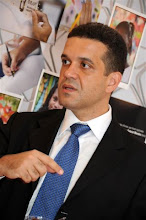Archive for December 2010
Innovation in Brazil
BRAZIL
www.oecd.org/dataoecd/30/61/46663708.pdf
Brazil’s economy is characterised by large and well-developed agricultural, mining, manufacturing and services sectors. Its USD 2 trillion economy is expanding rapidly into world markets, and is also changing structurally. Over the decade to 2008, high-technology manufacturing exports increased at an average annual 16%, faster than total manufacturing exports (13%), a sign of higher competitiveness.
Brazil’s science and technology profile shows weaknesses, but some areas have improved over the past two years. In 2008, gross expenditure on R&D (GERD) was 1.1% of GDP. While this is below the OECD average, it is higher than in India, Russia and South Africa. Business expenditure on R&D (BERD) was 0.5% of GDP in 2008. To raise this, Brazil has a generous 25.5% tax subsidy rate for every US dollar of R&D.
Emerging economies produce few patents relative to R&D, as illustrated by Brazil’s 0.3 triadic patents per million population in 2008. However, Brazil is increasingly involved in patent development in waste management, water pollution control and renewable energy. In 2008 it published 26 806 scientific articles; at 141 per million population, this indicator is well below the OECD average but has increased sharply over the past two years.
In 2008, it had 1.6% of world scientific articles, more than the Netherlands, for example. Between 1998 and 2008, publications increased by 12.2% on an average annual basis. Only 3.6% of Brazil’s firms introduced new-to-market product innovations during 2003-05, and a below average 36% of firms undertook non-technological innovation.
www.oecd.org/dataoecd/30/61/46663708.pdf
Brazil’s economy is characterised by large and well-developed agricultural, mining, manufacturing and services sectors. Its USD 2 trillion economy is expanding rapidly into world markets, and is also changing structurally. Over the decade to 2008, high-technology manufacturing exports increased at an average annual 16%, faster than total manufacturing exports (13%), a sign of higher competitiveness.
Brazil’s science and technology profile shows weaknesses, but some areas have improved over the past two years. In 2008, gross expenditure on R&D (GERD) was 1.1% of GDP. While this is below the OECD average, it is higher than in India, Russia and South Africa. Business expenditure on R&D (BERD) was 0.5% of GDP in 2008. To raise this, Brazil has a generous 25.5% tax subsidy rate for every US dollar of R&D.
Emerging economies produce few patents relative to R&D, as illustrated by Brazil’s 0.3 triadic patents per million population in 2008. However, Brazil is increasingly involved in patent development in waste management, water pollution control and renewable energy. In 2008 it published 26 806 scientific articles; at 141 per million population, this indicator is well below the OECD average but has increased sharply over the past two years.
In 2008, it had 1.6% of world scientific articles, more than the Netherlands, for example. Between 1998 and 2008, publications increased by 12.2% on an average annual basis. Only 3.6% of Brazil’s firms introduced new-to-market product innovations during 2003-05, and a below average 36% of firms undertook non-technological innovation.
Tuesday, December 28, 2010
Posted by Fabiano Gallindo
Guarana Jesus

DESIGN STRATEGY
DESIGN Alexandre Coreixas, Caroline Rosa, Christiano Chamusca, Daylton Almeida, Fabiana Brito, Hugo Bomfim, Hugo da Silva Souza, Leandro Pierucci, Leonardo Lanzetta, Márcia Tabajara, Mário Mendonça, Roberta Loyola, Rodrigo Rabello, Sônia Carolina Batista e Vanessa Freire | Dia Comunicação | Rio de Janeiro – RJ
CLIENT Recofarma | Brasília – DF
REVAMPING OF THE GUARANA JESUS SOFT DRINK BRAND, which is an icon in the northeastern Brazilian state of Maranhão. The new can design was chosen through internet voting and SMS messages. The company’s brandbook containing two volumes complemented the branding package. MATERIALS: Brandbook: MDF wood case with four-color and varnish silk screen printing imitating Maranhão- style tiles. Inside the case, ceramic gift tokens, book covers made from buriti wine palm and wrapped with bone lace•
Saturday, December 25, 2010
Posted by Fabiano Gallindo




